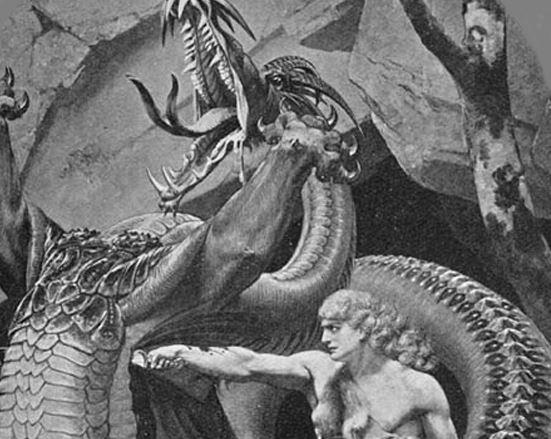Siegfried

🧝♂️ Who is Siegfried?
➤ A hero of Germanic legend
Siegfried is the archetypal dragon slayer, the invulnerable warrior whose courage and naivety make him a tragic figure.
📖 1. Siegfried in the "Nibelungenlied" (c. 1200)
Origin:
Son of Siegmund and Sieglinde, royal child from Xanten.
Raised as a nobleman with superhuman strength.
Heroic deeds:
Slays the dragon Fafnir and bathes in its blood – thereby becoming invulnerable, except for the spot where a linden leaf fell on his shoulder.
Captures the Nibelungen treasure and the invisibility cap (makes him invisible and increases his strength).
Marries Kriemhild after helping Gunther defeat the Valkyrie Brunhild.
Tragedy:
He is murdered from behind by Hagen von Tronje while unarmed – through the vulnerable spot on his back.
His wife Kriemhild swears revenge – which culminates in an apocalyptic spiral of violence.
🎭 2. Siegfried in Richard Wagner's The Ring of the Nibelung
Wagner transforms Siegfried into a titanic figure, almost like a Nordic Prometheus:
Naive, fearless, instinctive, full of creative power.
He reforges the sword Nothung – a symbol of will and knowledge.
Slays the dragon Fafnir and, after bathing in blood, understands the language of birds.
Loves Brünnhilde, but is betrayed and dies tragically – his death is the beginning of the Twilight of the Gods.
Wagner's Siegfried is almost a Nietzschean superman – but fails due to the lies and intrigues of the world.
🧠 3. Symbolic Interpretations of Siegfried
Siegfried stands for:
Symbol Meaning
🐉 Dragon: The unconscious / evil / fear
🩸 Dragon's blood: Initiation / transformation
🌿 Linden leaf: Human weakness, the inevitable
🧙♂️ Cloak of invisibility: Invisible power / ego's hiding place
🔥 Fire & Forge: Purification, self-knowledge, smith of destiny
⚔️ Nothung: Will to truth / divine mission
He is therefore not only a hero, but also a kind of spiritual seeker who achieves insight through courage – and is broken by the contradictions of the world.
🎨 Siegfried in Art and Literature
Wagner (Operas: "Siegfried," "Götterdämmerung")
Fritz Lang's film "The Nibelungs" (1924)
Anselm Kiefer: Modern Reinterpretations of the Nibelungen Myths
During the Nazi era, Siegfried was ideologically abused – after 1945, the figure was critically examined.
📚 Conclusion
Siegfried is:
The shining hero with a dark shadow
The archetype of the innocent who falls into a corrupt world
A figure between myth, tragedy, and spirituality

